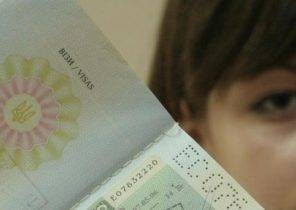The discomfort caused by the “turtle neck” where the head and neck protrude forward, like a turtle, and the back is rounded, though her armor kept after the end of the remote work. If nothing is done, they will not pass by themselves.
Below we will explain how to get rid of the syndrome “turtle neck”, which arises as a consequence of the isolation and closed life. In the last article, “the Spread of the syndrome of “turtle neck”, which can lead to pain in the neck and shoulders. Three rules of prevention” told about the three exercises to relieve pain in the neck. In this part the journalist Yuki Miku learned from a visiting Professor, Showa University Hiraizumi Hiroshi (Hiroshi Hiraizumi) tricks relieve pain in the upper body from the shoulders to the back and achieve a positive attitude from a psychological point of view.
Rules of prevention of the syndrome of “turtle neck”
1. Head and shoulders should not come forward. The head should be directly above the body. Shoulders to keep the body.
2. Need 40 seconds to relax the neck to get rid of pain in it.
3. To raise the head and neck with a 40-second charging for the muscles of the neck, to return to the human condition from a state of turtles.
4. Remove from the back “shell” with a 30-second relaxation of the blades.
5. Straighten the twisted body, spreading his arms out to the side for 20 seconds. Let out your breath and posture.
Rule 4: remove from the back “shell” with a 30-second relaxation of the blades.
The head can be returned to the correct position by lifting it with the relaxation of neck and exercise for the muscles, but to re – “turn” of the turtles in person, just not enough.
“Back strains and discomfort, There is severe pain in the shoulders and neck” — all symptoms of “turtle neck”. They arise as a result of rounding the back like a turtle shell. In fact, the main reason is stale blades.
“In the shoulder are the trapezius muscle, the broadest muscle of the back and other important muscles that result in movement of the upper body. When the “turtle the neck”, the back is rounded, and the blades of harden in the extended position. Muscles associated with the shoulder blades also cease to shrink correctly, therefore, worsens the blood circulation. This causes pain in the shoulders and neck,” said Hiraizumi
The flexibility of the motion of the blades revitalizes your upper body and reduces stress caused by the “turtle neck”. To relax the shoulder blades to do a 30-second charging.
For this you need a towel. The width of the grip should be adjusted depending on the flexibility of the shoulders so to avoid any discomfort.
(1) On the inhale lift the towel over your head and lock for five seconds;
(2) exhale to lower towel behind your head and hold in this position for five seconds. To feel the stretching of the pectoralis major muscle and the mixing blades;
(3) On the inhale to return to position (1). On the exhale bend forward with a towel in his outstretched hands and hold this position for five seconds.
Repeat these exercises three times.
“Pinch the shoulder blades back to their natural flexibility. At the same time relax the trapezius muscle and latissimus dorsi muscle, so the pain in your shoulders and back out,” he said Hiraizumi.
I tried to do these exercises. When lowering the towel in his hands, felt the tension, so I began to do it more smoothly, observing the sensations. When I moved the elbows to the body and took the blades, then felt the hardened back relaxed. If you gradually increase the grip, the muscles stretch better. When fixing the position for five seconds, involuntarily there is a desire to hold the breath, but this is not worth it.
Rule 5: straighten the twisted body, spreading his arms in opposite directions for 20 seconds. Let out your breath and posture.
“Also with a towel stretch both hands take turns with laterally the case,” recommends Hiraizumi.
(1) Drag a towel in his hands and pull them forward.
(2) the Left hand raise up above the head and the right lower down and pull the towel. Breathe normally and fix the position for ten seconds. You will feel a stretch the intercostal muscles and the pectoralis major muscle.
(3) Now do the opposite — raise your right hand above the head and the left hand pull the towel. Also lock the body position for ten seconds.
Repeat exercise (2) and (3) five times for each hand. Follow the breath.
“Towel pulls raised hand above his head in the opposite direction, and thus stretching the solidified the serratus anterior muscle and intercostal muscles involved in breathing. This will further increase the range of motion of the blades. At the same time expanding the thorax and ribs, which shrank as a result of “turtle neck,” so you will be able to use its lungs and to breathe easier,” said Hiraizumi.
I tried to make this exercises. It was after the exercises of the blades, so the hand went up easily, however, if you just start with lifting of hands, to people suffering from so-called “frozen shoulder”, it will not be easy.
However, if you start with 30 seconds of relaxation and then proceed to the 20-second stretching, removed the residual rigidity in the upper body and improves posture. Indeed, it seemed to me that breathing also became easier. And yet is there a link between the numbness of the body and breath?
“Tight muscles relax, and restores the mobility of the blades and the ribs. Chest easier to expand, so it gets more oxygen. As a result, improves the metabolism of muscle and brain, and improving blood circulation. Pathogenic substances are washed away, and it relieves muscle pain. In addition, the improved blood flow can positively affect the brain and mental activity”, — said Hiraizumi.
Indeed, every time I take a deep breath, I feel that it relaxes not only my body but also the soul. It’s perfect for getting rid of the syndrome of “turtle neck”.
“If you give up on “turtle the neck”, the neck joints and muscles supporting the head, frozen in the wrong position, and pain becoming the norm. As a result of deteriorating blood flow to the brain, so the concentration decreases during operation. In severe cases it can also cause depression. Be sure to compare the painful expression on a “turtle neck” with the smile that will appear when you will correct posture,” said Hiraizumi.
In some cases a pain in the neck and shoulders so that life becomes a joy. Prevention of the syndrome of “turtle neck” that turns the shell back in soft wings, fits my mood: raise your head and is easy to move forward.
Miku Yuki — essayist, independent speaker. Broadcasts on television and preparing reports. Thanks to the possession of such qualifications as an interior designer, consultant for light and colorist, holds lectures on light placement, writes articles on the subject of health. Is a member of the policy Council in the field of fisheries under the Ministry of agriculture, lands, forestry and fisheries of Japan.







